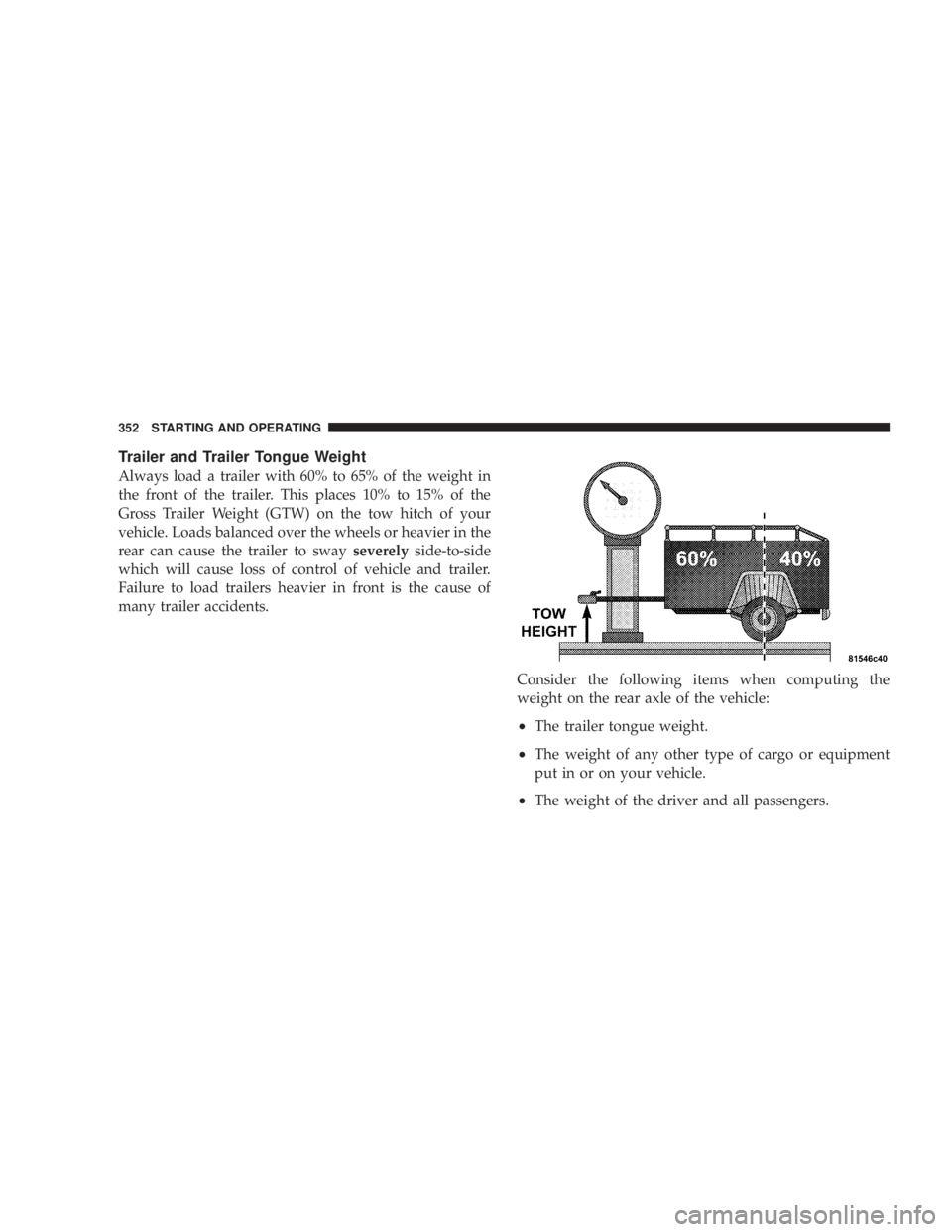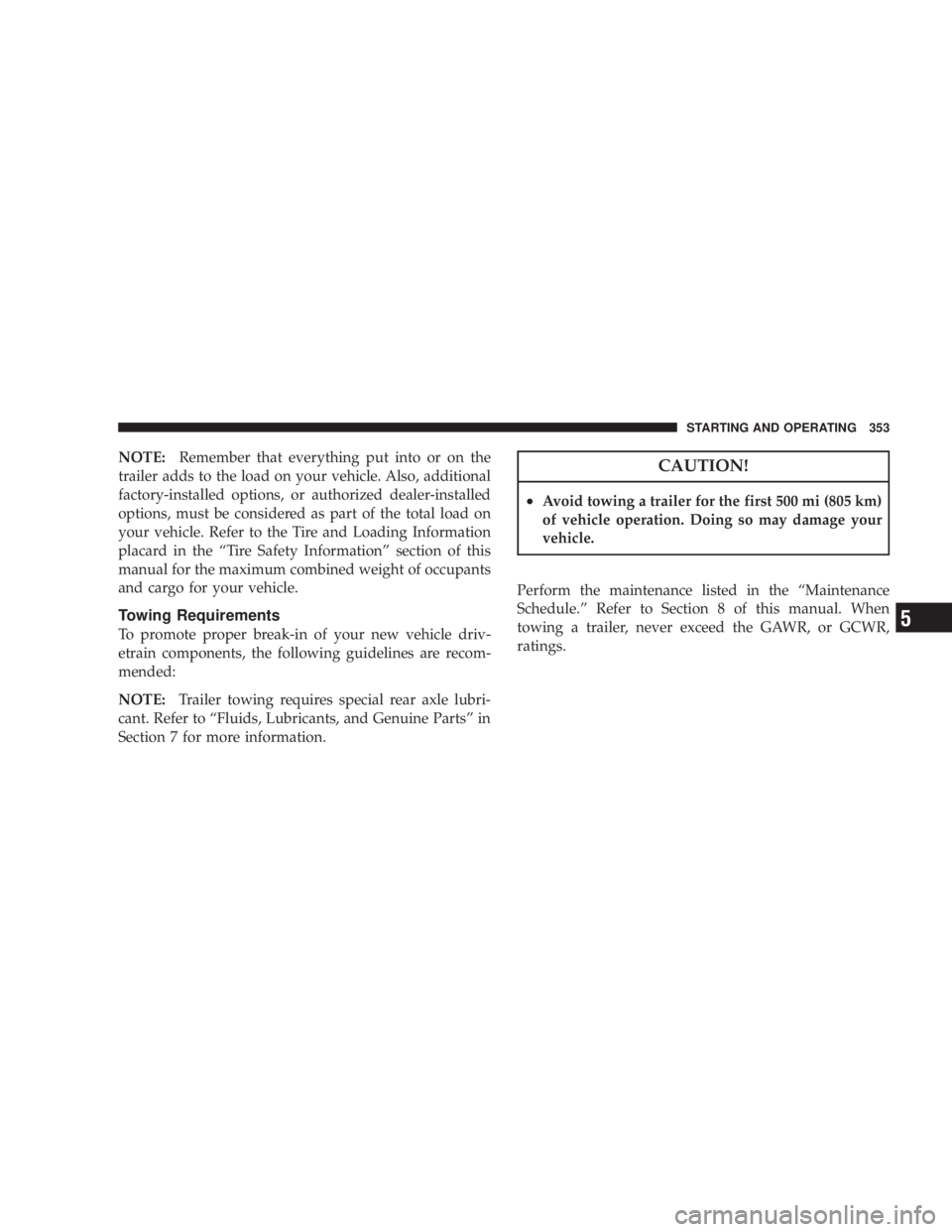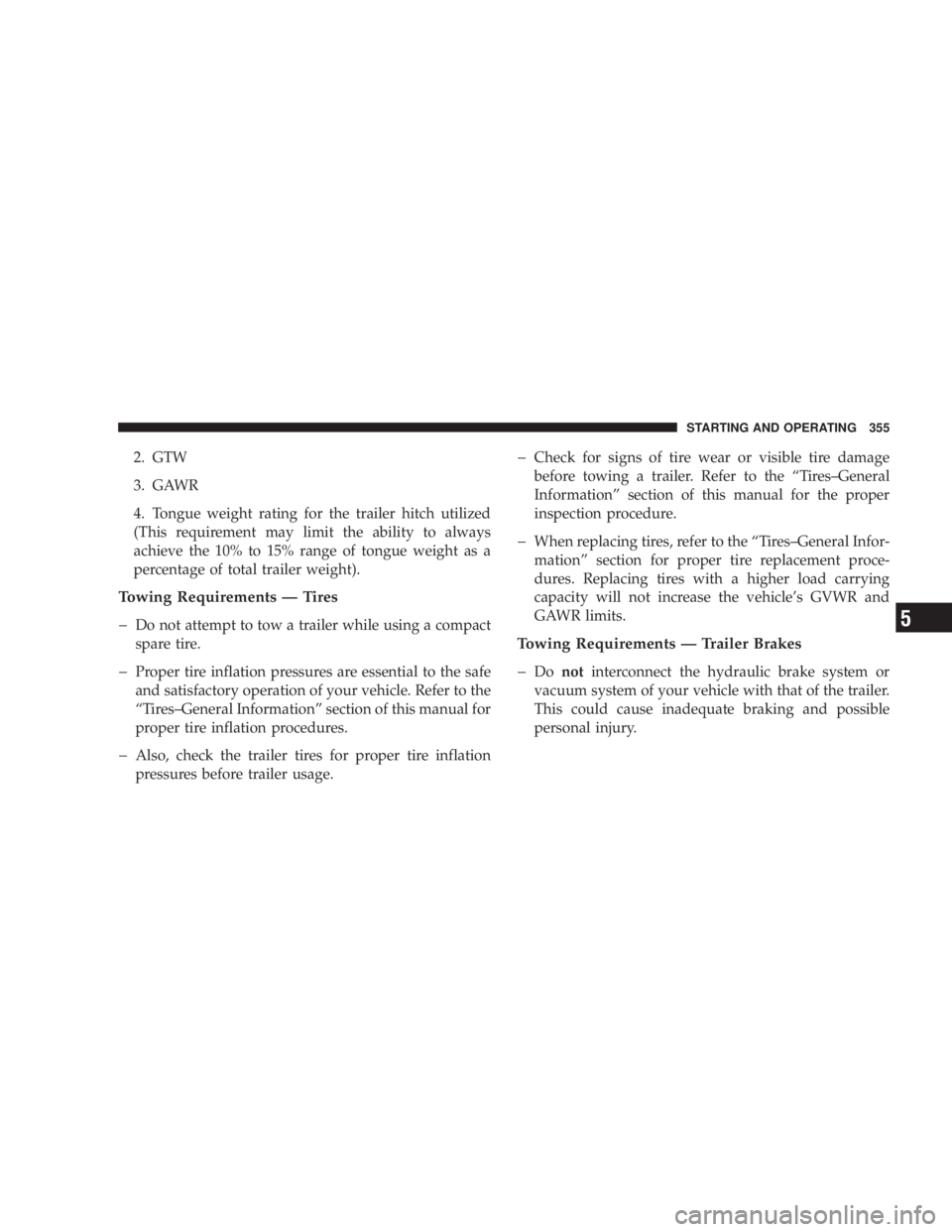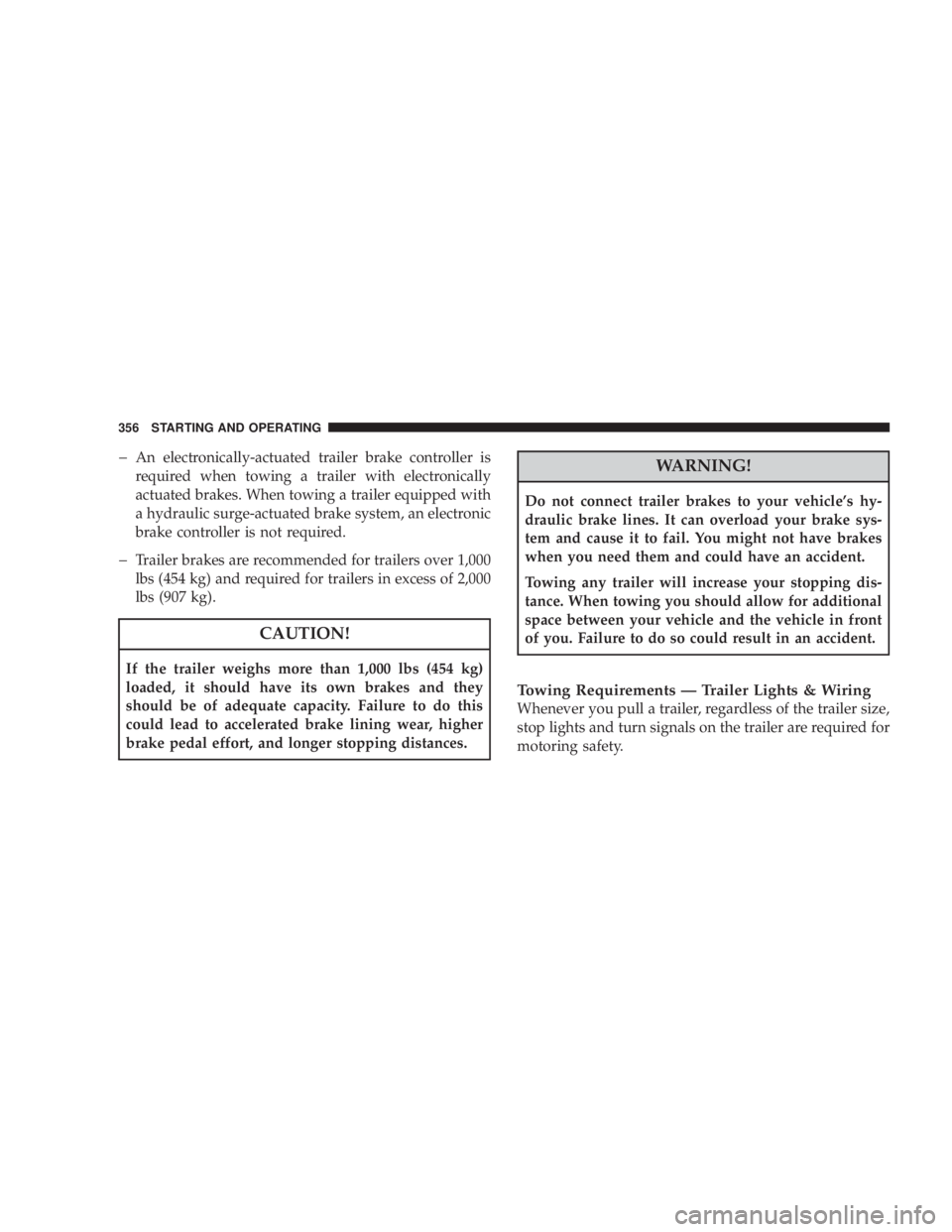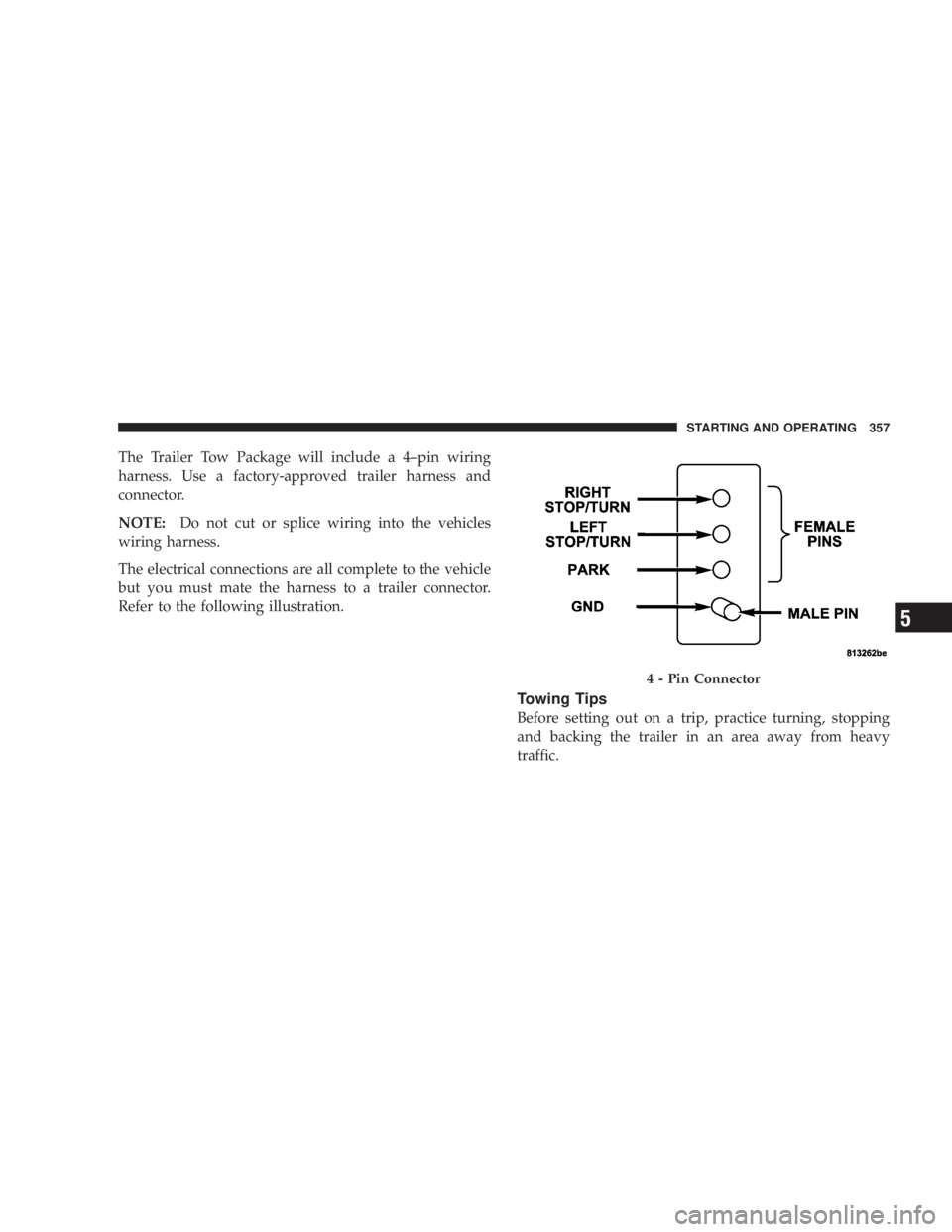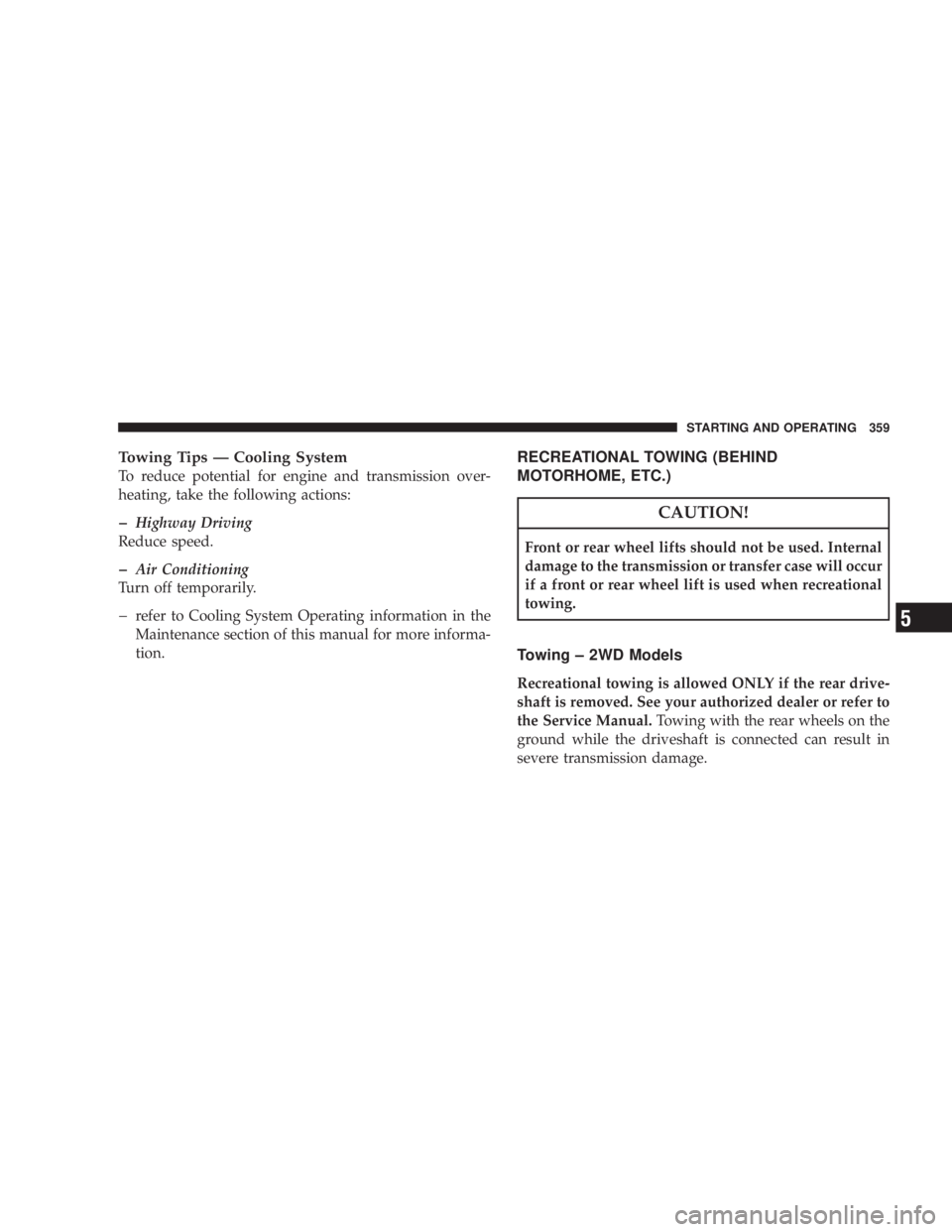JEEP WRANGLER UNLIMITED 2008 Owners Manual
WRANGLER UNLIMITED 2008
JEEP
JEEP
https://www.carmanualsonline.info/img/16/55980/w960_55980-0.png
JEEP WRANGLER UNLIMITED 2008 Owners Manual
Trending: radio, flat tire, oil change, brake fluid, remote control, service, air condition
Page 351 of 466
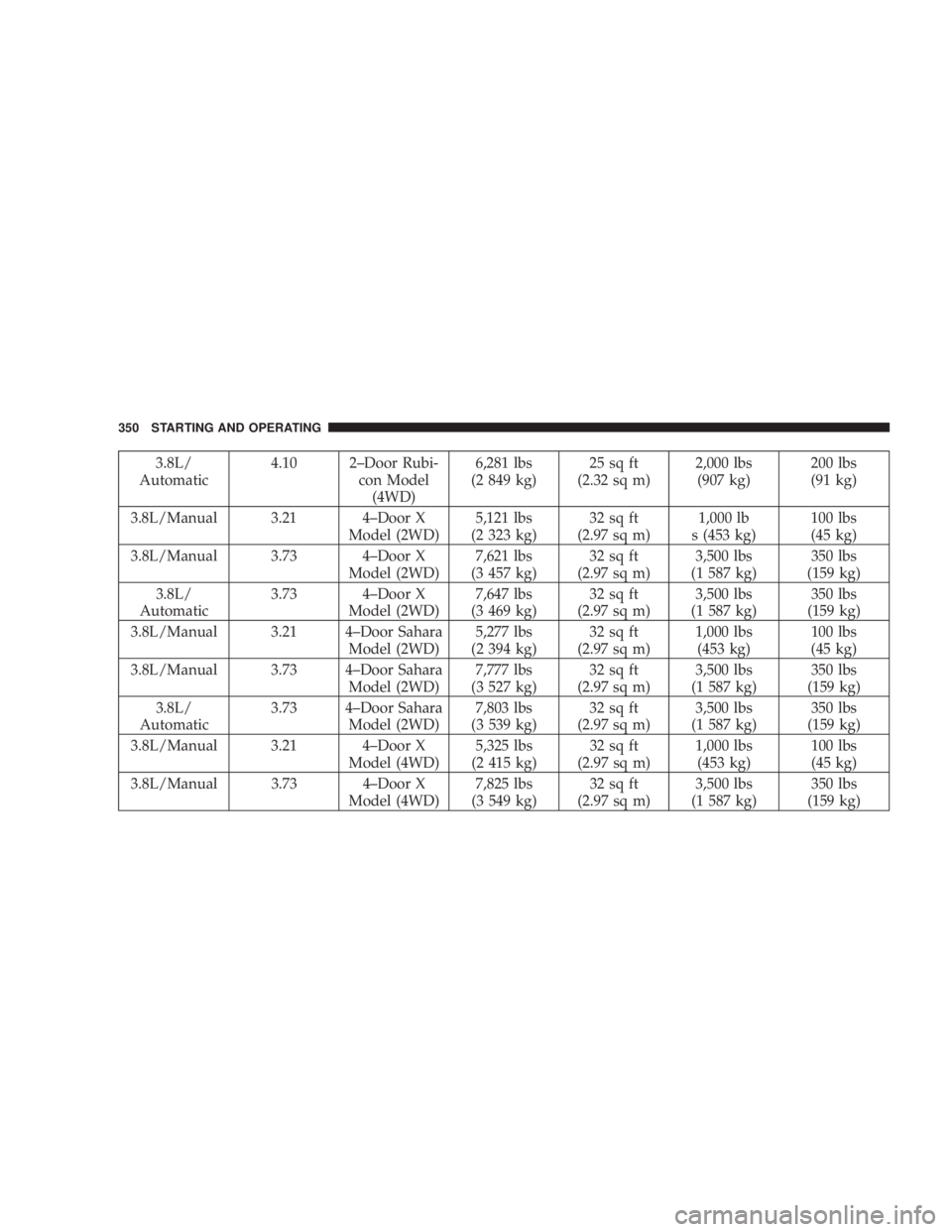
3.8L/
Automatic 4.10 2–Door Rubi-
con Model(4WD) 6,281 lbs
(2 849 kg) 25 sq ft
(2.32 sq m) 2,000 lbs
(907 kg) 200 lbs
(91 kg)
3.8L/Manual 3.21 4–Door X Model (2WD)5,121 lbs
(2 323 kg) 32 sq ft
(2.97 sq m) 1,000 lb
s (453 kg) 100 lbs
(45 kg)
3.8L/Manual 3.73 4–Door X Model (2WD)7,621 lbs
(3 457 kg) 32 sq ft
(2.97 sq m) 3,500 lbs
(1 587 kg) 350 lbs
(159 kg)
3.8L/
Automatic 3.73 4–Door X
Model (2WD) 7,647 lbs
(3 469 kg) 32 sq ft
(2.97 sq m) 3,500 lbs
(1 587 kg) 350 lbs
(159 kg)
3.8L/Manual 3.21 4–Door Sahara Model (2WD)5,277 lbs
(2 394 kg) 32 sq ft
(2.97 sq m) 1,000 lbs
(453 kg) 100 lbs
(45 kg)
3.8L/Manual 3.73 4–Door Sahara Model (2WD)7,777 lbs
(3 527 kg) 32 sq ft
(2.97 sq m) 3,500 lbs
(1 587 kg) 350 lbs
(159 kg)
3.8L/
Automatic 3.73 4–Door Sahara
Model (2WD) 7,803 lbs
(3 539 kg) 32 sq ft
(2.97 sq m) 3,500 lbs
(1 587 kg) 350 lbs
(159 kg)
3.8L/Manual 3.21 4–Door X Model (4WD)5,325 lbs
(2 415 kg) 32 sq ft
(2.97 sq m) 1,000 lbs
(453 kg) 100 lbs
(45 kg)
3.8L/Manual 3.73 4–Door X Model (4WD)7,825 lbs
(3 549 kg) 32 sq ft
(2.97 sq m) 3,500 lbs
(1 587 kg) 350 lbs
(159 kg)
350 STARTING AND OPERATING
Page 352 of 466
Page 353 of 466
Trailer and Trailer Tongue Weight
Always load a trailer with 60% to 65% of the weight in
the front of the trailer. This places 10% to 15% of the
Gross Trailer Weight (GTW) on the tow hitch of your
vehicle. Loads balanced over the wheels or heavier in the
rear can cause the trailer to swayseverelyside-to-side
which will cause loss of control of vehicle and trailer.
Failure to load trailers heavier in front is the cause of
many trailer accidents.
Consider the following items when computing the
weight on the rear axle of the vehicle:
•The trailer tongue weight.
•The weight of any other type of cargo or equipment
put in or on your vehicle.
•The weight of the driver and all passengers.
Page 354 of 466
Page 355 of 466
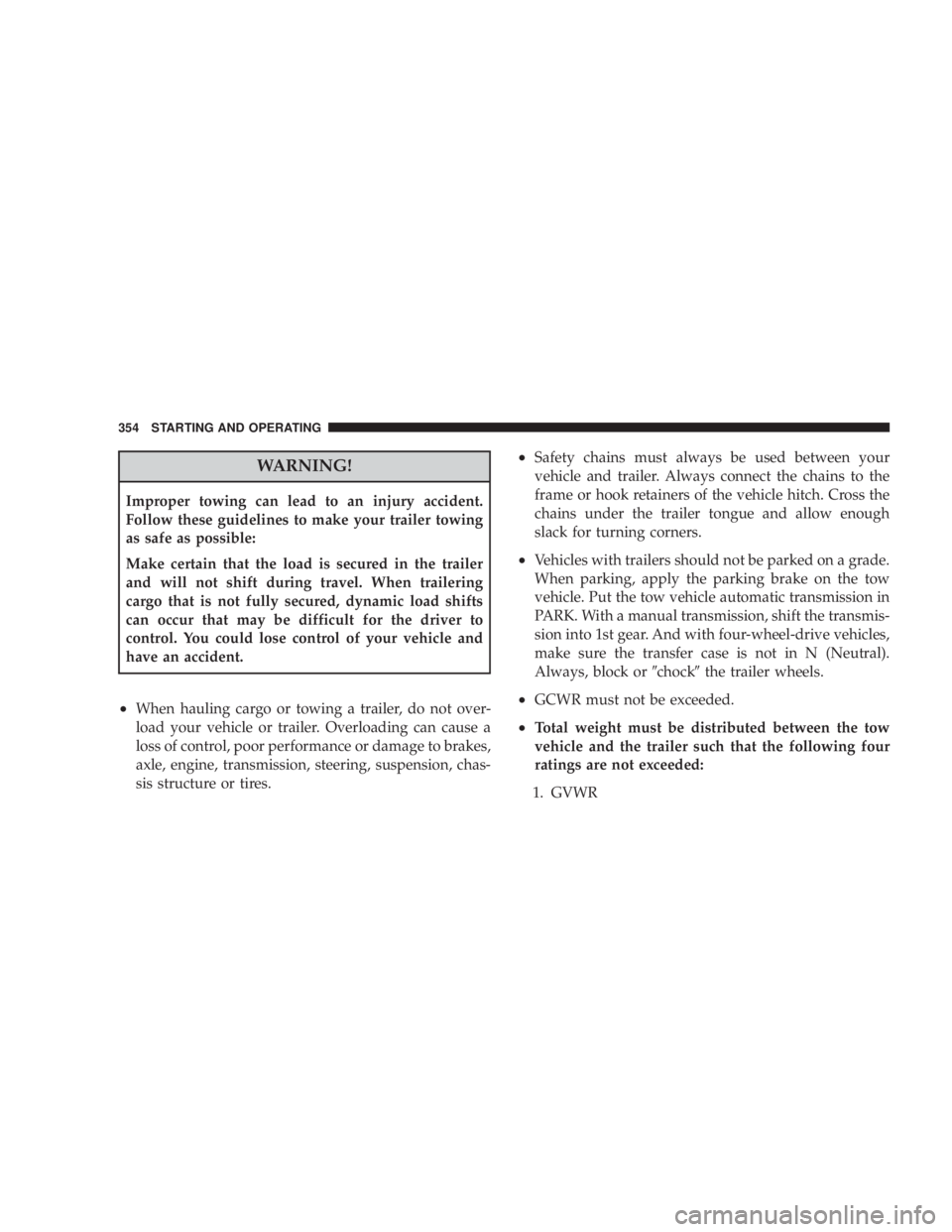
WARNING!
Improper towing can lead to an injury accident.
Follow these guidelines to make your trailer towing
as safe as possible:
Make certain that the load is secured in the trailer
and will not shift during travel. When trailering
cargo that is not fully secured, dynamic load shifts
can occur that may be difficult for the driver to
control. You could lose control of your vehicle and
have an accident.
•When hauling cargo or towing a trailer, do not over-
load your vehicle or trailer. Overloading can cause a
loss of control, poor performance or damage to brakes,
axle, engine, transmission, steering, suspension, chas-
sis structure or tires.
•Safety chains must always be used between your
vehicle and trailer. Always connect the chains to the
frame or hook retainers of the vehicle hitch. Cross the
chains under the trailer tongue and allow enough
slack for turning corners.
•Vehicles with trailers should not be parked on a grade.
When parking, apply the parking brake on the tow
vehicle. Put the tow vehicle automatic transmission in
PARK. With a manual transmission, shift the transmis-
sion into 1st gear. And with four-wheel-drive vehicles,
make sure the transfer case is not in N (Neutral).
Always, block or�chock�the trailer wheels.
•GCWR must not be exceeded.
•Total weight must be distributed between the tow
vehicle and the trailer such that the following four
ratings are not exceeded:
1. GVWR
354 STARTING AND OPERATING
Page 356 of 466
Page 357 of 466
�An electronically-actuated trailer brake controller is
required when towing a trailer with electronically
actuated brakes. When towing a trailer equipped with
a hydraulic surge-actuated brake system, an electronic
brake controller is not required.
�Trailer brakes are recommended for trailers over 1,000
lbs (454 kg) and required for trailers in excess of 2,000
lbs (907 kg).
Page 358 of 466
Page 359 of 466
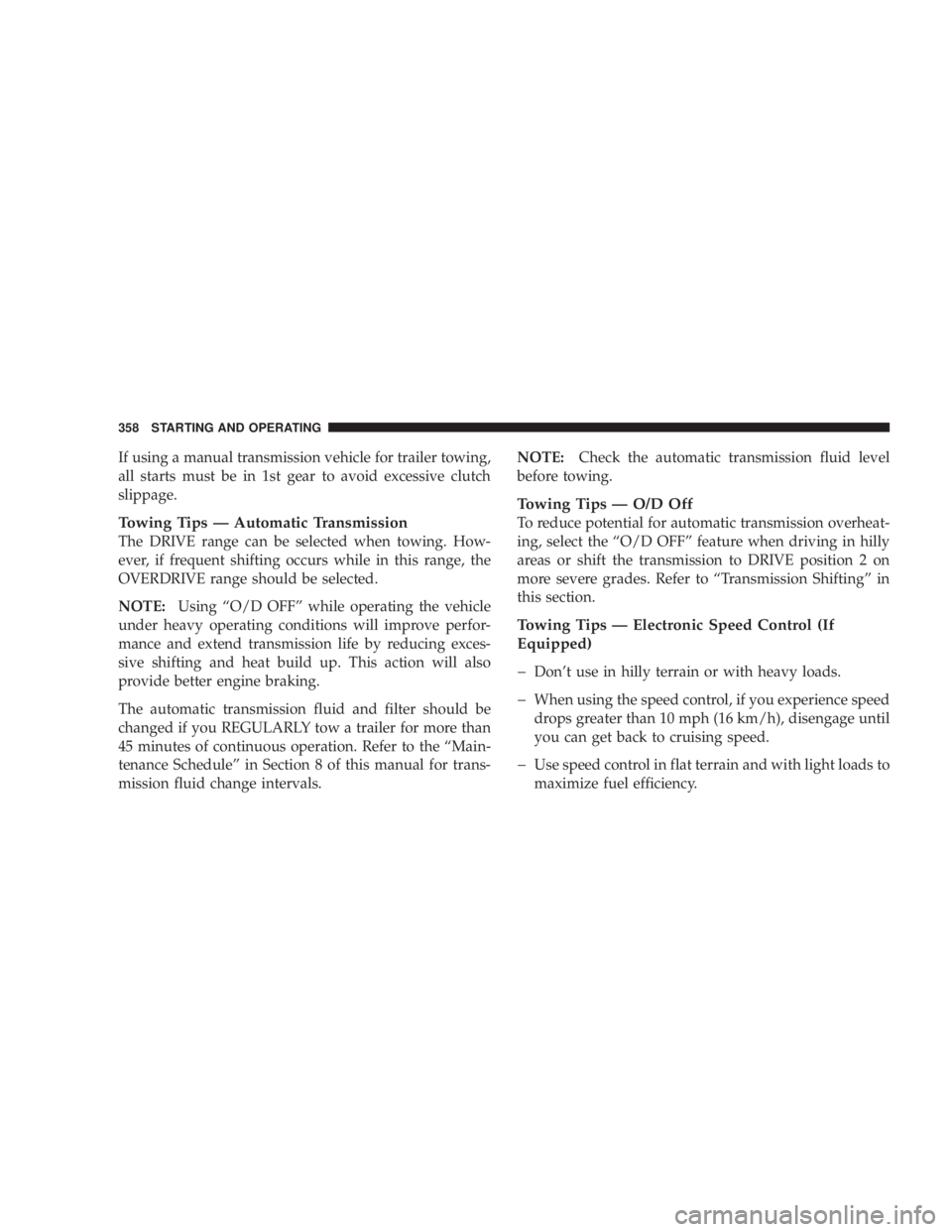
If using a manual transmission vehicle for trailer towing,
all starts must be in 1st gear to avoid excessive clutch
slippage.
Towing Tips — Automatic Transmission
The DRIVE range can be selected when towing. How-
ever, if frequent shifting occurs while in this range, the
OVERDRIVE range should be selected.
NOTE:Using “O/D OFF” while operating the vehicle
under heavy operating conditions will improve perfor-
mance and extend transmission life by reducing exces-
sive shifting and heat build up. This action will also
provide better engine braking.
The automatic transmission fluid and filter should be
changed if you REGULARLY tow a trailer for more than
45 minutes of continuous operation. Refer to the “Main-
tenance Schedule” in Section 8 of this manual for trans-
mission fluid change intervals. NOTE:
Check the automatic transmission fluid level
before towing.
Towing Tips — O/D Off
To reduce potential for automatic transmission overheat-
ing, select the “O/D OFF” feature when driving in hilly
areas or shift the transmission to DRIVE position 2 on
more severe grades. Refer to “Transmission Shifting” in
this section.
Towing Tips — Electronic Speed Control (If
Equipped)
�
Don’t use in hilly terrain or with heavy loads.
�When using the speed control, if you experience speed
drops greater than 10 mph (16 km/h), disengage until
you can get back to cruising speed.
�Use speed control in flat terrain and with light loads to
maximize fuel efficiency.
358 STARTING AND OPERATING
Page 360 of 466
Trending: park assist, diagram, hood release, wheel torque, fuel pump, air filter, checking oil


